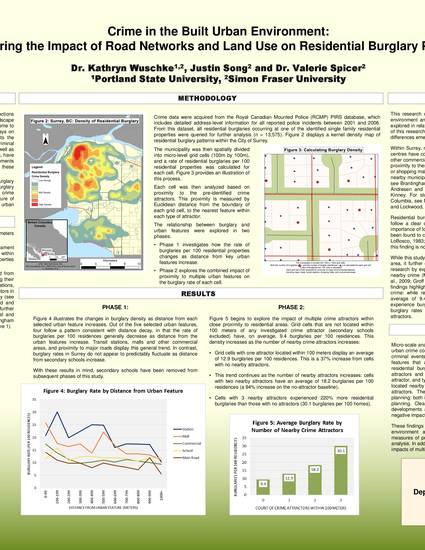
- Crime -- Geographic information systems,
- Geospatial data,
- Criminal statistics,
- Spatial analysis (Statistics),
- Geographic information systems -- Applications to criminology
For decades, environmental criminology theory has emphasized the connections between the built urban environment and criminal activity. The urban landscape determines both the origins and destinations of everyday journeys from home to work, school, shoppingor entertainment areas, and it provides the pathways on which residents travel. As such, the built environment guides and limits the locations that offenders may search within in order to identify potential criminal opportunities. For these reasons, access and proximity to major roads, as well as key local activity nodes such as shopping malls, transit stations and schools, have been frequently found to be an important indicator of local crime. Advancements in spatial data availability have allowed for further exploration of these connections at the micro-spatial scale.

Poster presented at the American Society of Criminology Annual Meeting, New Orleans, November 2016.